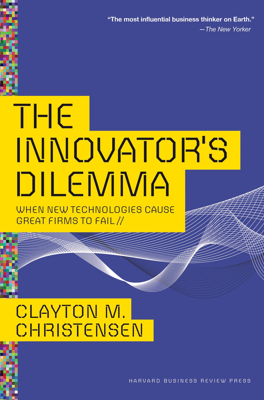Give Responsibility for Disruptive Technologies to Organizations Whose Customers Need Them
Customer Influence on Disruptive Technologies
Companies often find their investments and innovations heavily driven by customer needs, a concept supported by the theory of resource dependence. This theory posits that firms will only survive if they cater to the needs of customers and investors, with their operations tightly tuned to these external expectations. The paradoxical realization is that managers, despite their strategic vision, often find their organizations resistant to changes not driven by customer demand.
Resource Allocation and Innovation
- Resource Allocation: The resource allocation process, which determines funding and staffing of projects, is powerfully influenced by customer demand.
- Patterns of Innovation: Companies tend to innovate in areas where customer interest exists, reinforcing successful investment patterns and weeding out less desired initiatives.
- Executive Influence: While senior executives make strategic decisions, mid-level managers significantly influence which projects get attention based on customer perceptions and potential profitability.
Case Studies in Disruptive Technology Management
Quantum and Plus Development
- Quantum's Approach: To enter the emerging 3.5-inch drive market, Quantum spun off Plus Development Corporation to focus on this new opportunity independently.
- Outcome: Plus Development successfully penetrated the market, and Quantum eventually integrated it back, transitioning to success in the new market.
Control Data in Oklahoma
- Strategy: Control Data Corporation (CDC), dominant in 14-inch drives, missed the initial wave of 8-inch drives. However, it located its 5.25-inch effort in Oklahoma to isolate it from mainstream customer demands.
- Result: The isolated effort in Oklahoma was profitable, although late to market, showing how location and focus can facilitate disruptive innovation success.
Micropolis: In-House Transition
- Internal Struggle: Micropolis' founder decided to pivot to the 5.25-inch drive market, focusing on reallocating resources from mainstream projects to the new technology.
- Challenges: The transition was exhausting and resources constantly pulled towards established customer needs, yet they managed to succeed, illustrating the difficulty of internal transformation.
Broader Applications of Resource Dependence
Digital Equipment Corporation (DEC) and IBM
- Minicomputers to PCs: DEC failed to establish a strong PC business because its mainstream organization couldn't shift resources effectively from higher-margin products.
- IBM's Success: IBM separated its PC division geographically and operationally, aligning it with personal computing market needs, which led to early success in PCs. Later integration with the main organization, however, posed challenges.
Retailing: Kresge, Woolworth, and Discount Retailing
- Kresge’s Focused Approach: Kresge (with Kmart) successfully created an independent organization for discount retailing, exiting the traditional variety store business.
- Woolworth’s Failure: Attempted to balance both variety store and discount retailing within the same organization but failed to sustain both models, leading to Woolco’s collapse.
Hewlett-Packard’s Laser and Ink-Jet Printers
- Dual Units: HP created an independent organizational unit for ink-jet printers, allowing competition and independent focus apart from its established laser jet division.
- Market Impact: This separation enabled both technologies to thrive, with ink-jets eventually capturing significant market share from laser jets.
Conclusion
The successful management of disruptive technologies often requires creating independent organizations that align directly with emerging market needs, freeing them from the constraints of existing customer demands and traditional resource allocation processes. This strategic separation allows companies to harness the power of resource dependence rather than fight it, ensuring both innovation and survival in the face of industry disruptions.
